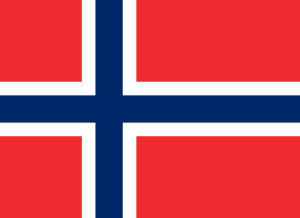Svalbard, Norway
 Svalbard is an archipelago in the ArcticDefinitions of the Arctic vary according to environmental, geographical, political, cultural and scientific perspectives. Some scientists define the Arctic as areas having a high latitude, long winters, short, cool summers,... More Ocean covering 61,022 km2 with 2600 inhabitants (0.04/km2). The Svalbard Treaty of 1920 recognizes Norwegian sovereignty, and the 1925 Svalbard Act made Svalbard a full part of the Kingdom of Norway. They also established Svalbard as a free economic and demilitarized zone. However, administratively, Svalbard forms an unincorporated area administered by The Governor of Svalbard (‘Sysselmannen’) appointed by the Norwegian government. Due to its special jurisdiction, it is outside of the Schengen Area and the European Economic Area (EEA). Longyearbyen is the administrative centre of Svalbard, located on the main island of Spitsbergen. In total, there are five inhabited places on Svalbard (international research village Ny- Ålesund, Pyramiden, Barentsburg, Longyearbyen, and Hornsund). Around 60% of the archipelago is covered by glaciers and Svalbard is defined by extreme arcticDefinitions of the Arctic vary according to environmental, geographical, political, cultural and scientific perspectives. Some scientists define the Arctic as areas having a high latitude, long winters, short, cool summers,... More climateThe average weather we would expect over a long period of time (seasons, years, decades). Climate varies from place-to-place across the Earth. Climate is determined by long-term (over at least... More.
Svalbard is an archipelago in the ArcticDefinitions of the Arctic vary according to environmental, geographical, political, cultural and scientific perspectives. Some scientists define the Arctic as areas having a high latitude, long winters, short, cool summers,... More Ocean covering 61,022 km2 with 2600 inhabitants (0.04/km2). The Svalbard Treaty of 1920 recognizes Norwegian sovereignty, and the 1925 Svalbard Act made Svalbard a full part of the Kingdom of Norway. They also established Svalbard as a free economic and demilitarized zone. However, administratively, Svalbard forms an unincorporated area administered by The Governor of Svalbard (‘Sysselmannen’) appointed by the Norwegian government. Due to its special jurisdiction, it is outside of the Schengen Area and the European Economic Area (EEA). Longyearbyen is the administrative centre of Svalbard, located on the main island of Spitsbergen. In total, there are five inhabited places on Svalbard (international research village Ny- Ålesund, Pyramiden, Barentsburg, Longyearbyen, and Hornsund). Around 60% of the archipelago is covered by glaciers and Svalbard is defined by extreme arcticDefinitions of the Arctic vary according to environmental, geographical, political, cultural and scientific perspectives. Some scientists define the Arctic as areas having a high latitude, long winters, short, cool summers,... More climateThe average weather we would expect over a long period of time (seasons, years, decades). Climate varies from place-to-place across the Earth. Climate is determined by long-term (over at least... More.
The following information aims at providing an overview of the most common permit types relevant for scientists travelling to and working in Svalbard.
National rules and regulations are given for the following categories:
- Cross border travel (persons, equipment, samples, chemicals),
- Access to specific areas,
- Permits to conduct fieldwork and collect samples,
- Field instrumentation,
- Safety equipment and
- Regional/local permits.
Additional information sources relevant for conducting science in Svalbard are also listed.
Disclaimer: INTERACT takes no legal responsibility for the information presented here. These pages only address the most common permit types. Certain studies may require specialist permits not covered here. New regulations may also come into force, permit conditions may change and links may become outdated or no longer work. If you encounter broken links, significant permit updates or have suggestions for additional permit types we can include, please contact us at https://eu-interact.org/contact/.
